Queenslander Don Bennett’s pivotal role with Bomber Command
‘Brilliant’ Queenslander Don Bennett’s pivotal role with the Bomber Command’s Pathfinders made him one of the Allies’ greatest leaders of World War II.
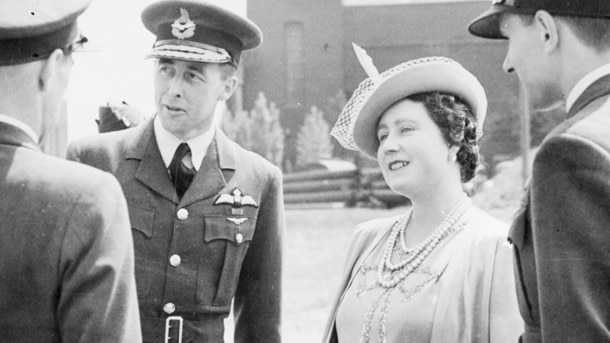
To the few surviving World War II Bomber Command crew it is the Australian aviator, the Royal Air Force vice air marshal and Pathfinder commander Don Bennett, who is remembered as one of the greatest wartime leaders.
Even 80 years on, they believe he was the right man for the right moment.
Underneath Bennett’s crisp no-nonsense and brusque attitude, his Pathfinder Force flyers knew his particularly direct, practical approach was conveying airmen’s problems directly to the War Cabinet and the Admiralty in London.
INTERACTIVE SPECIAL: 66 MINUTES OF HELL
No one would go in harder to fight for equipment, training, and sensible war time strategies than Bennett.
The Queenslander, born in 1910, had fostered both a deep camaraderie and sense of deadly purpose among the many hundreds of men under his command during World War II and now eight decades on those who knew him still speak reverently about his leadership.
Ninety nine year old Dick Raymond, of Wales, who was a flight engineer on a Pathfinder plane, Lancaster ND467, said Bennett was a “brilliant man.”
One of Britain’s finest physicists Bernard Lovell, one of the scientific “boffins” who helped develop the game changing radar system H2S at the urging of Bennett, would describe him as “remarkable.”
Bennett would end up air vice marshal in the Royal Air Force, being hand picked by Sir Arthur “Bomber” Harris to put into place an idea Bennett had first floated a year earlier, and which the Prime Minister Winston Churchill suddenly overcome his reluctance: the creation of a Path Finder Force, an elite group of flyers to lead formations of Lancasters and
Halifaxes so they could accurately find the German city targets to drop their bomb loads.
Bennett’s command of the Path Finders – from beginning to end – has become legendary.
The Toowoomba farmer’s son and RAAF pilot had been earmarked as a potential leader when he agreed to transfer to the Royal Air Force in 1931 to accrue even more navigation expertise and pilot flying boats. Here in Britain he excelled, including developing air to air refuelling, and he wrote a syllabus for flight navigators to obtain their licences before he flew for commercial companies.
66 Minutes of Hell
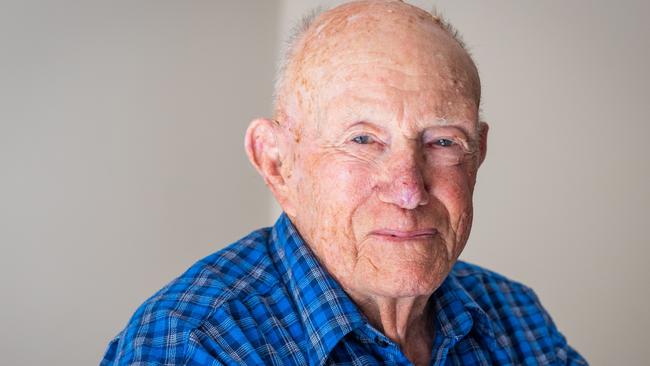
‘Your thoughts of living much longer were a bit bleak’
Bill Purdy fought through the most dangerous theatre of WWII as a pilot with Bomber Command. Every time he took off for Germany he stood a 10 per cent chance of not making it home.
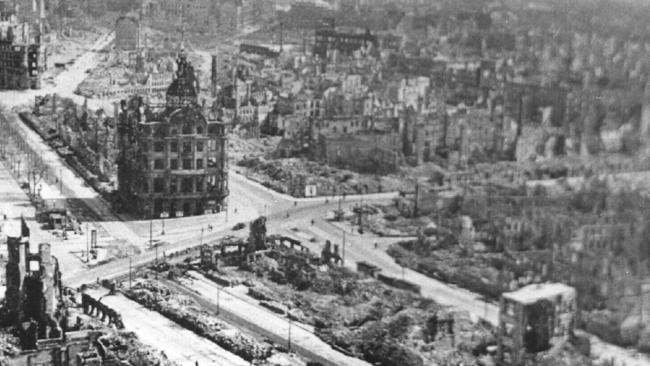
How Bomber Command was airbrushed from history
Politicians cancelled the important role Bomber Command played in WWII after a devastating attack on the city of Dresden which killed 25,000 people.
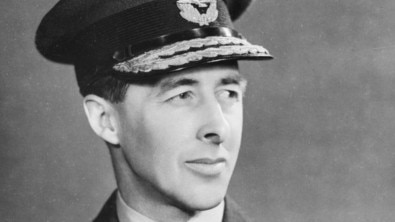
Little-known Aussie became one of the great wartime leaders
‘Brilliant’ Queenslander Don Bennett’s pivotal role with the Bomber Command’s Pathfinders made him one of the Allies’ greatest leaders of World War II.
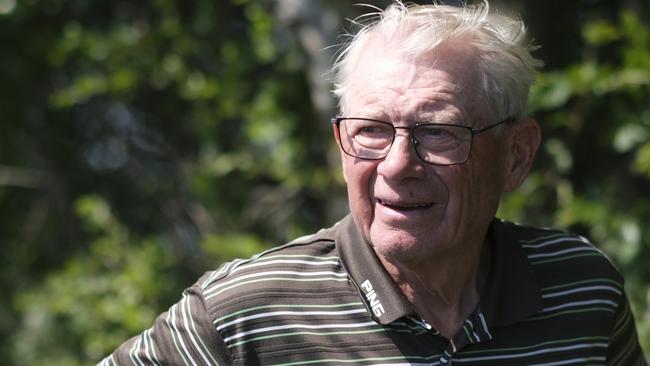
Danes can never forget Aussie airman’s ultimate sacrifice
Sigurd Sørensen was only seven years old the night Aussie pilot Norm Cooper’s plane went down. The force of the explosion blew out the windows of his family’s farmhouse.
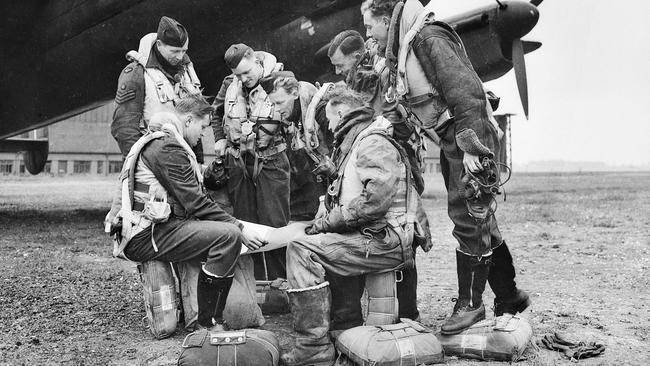
Radical radar breakthrough helped defeat Nazis
Six Bomber Command crews were reportedly ‘thrilled with our new toy’ but despite having a wartime technological marvel on-board none of their planes survived.
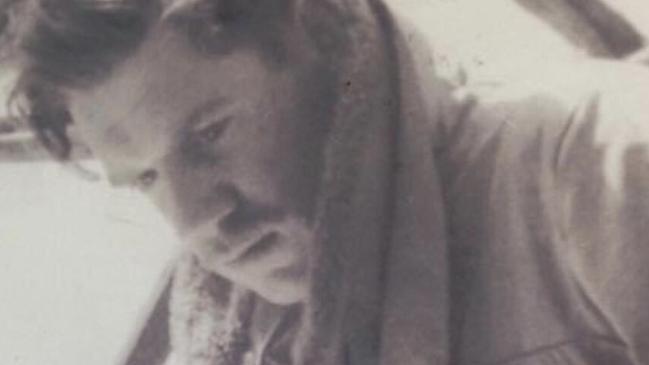
WWII hero with a compass hidden in his comb
Australian airman Alan McCormack survived being shot down over Denmark, a plunge into the frozen Baltic Sea, and a brutal prisoner-of-war camp, to make it to freedom.
But then came war and back in the military, Bennett knew intimately the emotional and technical expertise demanded of his men.
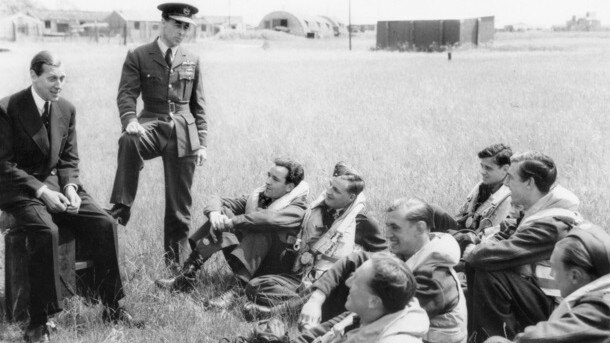
For in April 1942 when commanding the No. 10 Squadron, Bennett had been leading a raid to drop five 1200 pound bombs on the famous German battleship, Tirpitz, when his plane was shot down. He and his crew bailed out over Norway and Bennett had to find his way through deep snow, evading the German patrols to the Swedish border ski resort Storlien.
He returned to London within a month, was awarded a Distinguished Service Order and in July that year he was given the Path Finder leadership. He immediately gathered together the best crews to form the Path Finders: no. 7 squadron of Stirlings, no. 35 squadron of Halifaxes, no. 83 squadron of Lancasters and the Wellington aircraft of the no. 156 squadron and no. 109 squadron.
Raymond, then just 19, said he was in awe of Bennett: “One time I was on leave. I had done four operations and I was a complete and utter sprog, a learner. I was down at the camp gates trying to thumb a lift to Huntingdon, and along came a car with a pennant flying and to my horror it stopped, and he said ‘get in my man’. He always said ‘my man’, and I had to get in the front with the driver and that was Bennett. He said to me ‘what do you think of our technique?’ and I hadn’t got a bloody clue what he was talking about. He was a brilliant man, he could do anything. Of course what people didn’t realise he had been shot down over Scandinavian countries and escaped and went back flying again, he was brilliant in every way, but he was very aloof and he wasn’t one of the boys.’’
At the time the accuracy rate of the Bomber Command – the Halifaxes, Lancasters and other four engine bombers – tasked with dropping heavyweight bombs on industrial and urban German cities – was appallingly bad. Only ten per cent of the bombs struck within a five kilometre vicinity of the target, and Bennett, a master navigator, as well as a pilot, decided this was not nearly good enough.
Bennett had long been tightening the navigation of his men including recalibrating bombing angles to make the attacks more impactful.
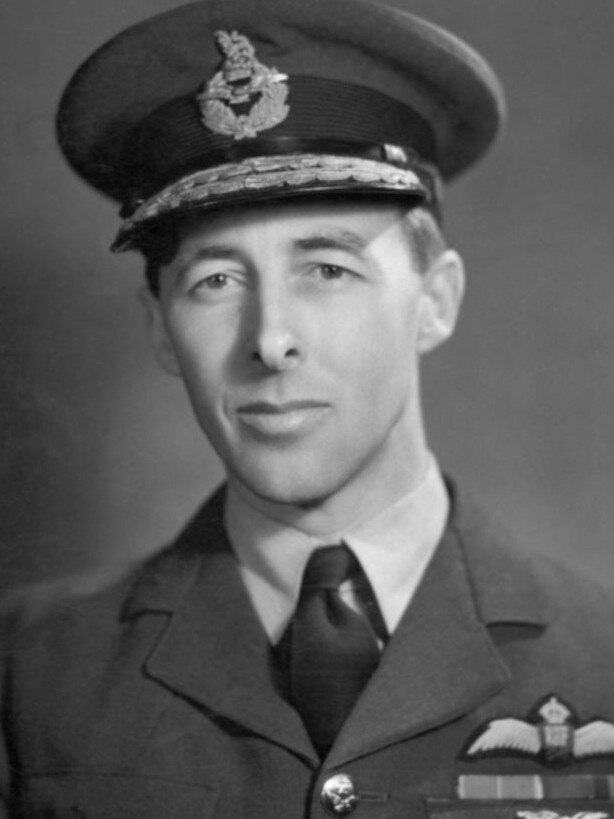

In his autobiography he said:“ We took more and more successful night photos and all of them proved that we were getting to our target … when I arrived at the squadron it was a matter of considerable pride if a crew brought home a photo showing the target area at all but it soon became a matter of considerable disgrace if one failed to obtain a photo of the aiming point itself”.
One of his first jobs as the head of the Path Finder Force was to head to the Signals Intelligence Unit at Defford and help test fly aircraft fitted with the new experimental radar system called H2S. The refined development of this allied radar system, which would ultimately be tested on six “test” planes including the JB412 – the Lancaster crewed by
Australian John Tree – convinced Churchill to recommence the Battle of Berlin in late 1943.
Bennett recalled in his book that the group of “Defford boffins” was led by Professor Philip Dee (who would go onto become a nuclear physicist) and assisted by Professor Benard
Lovell, (who would be highly decorated as an astronomer and physicist determining the orbits of meteors and building the Lovell radio telescope) and assisted by JPW Houchin and BJ O’Kane.
He wrote: “I required them to test fly at all hours of the day and night shook them to the core … in general such an elaborate device as H2S with its eight boxes each chock a block full of complicated circuitry would have taken one to two years to develop, yet as far as the main principles were concerned the whole system was complete within one month. Not only could we pick up coast lines and differentiate been land and water, but we could also pick up built up areas of an appreciable size with complete certainty.”
Prof Lovell could remember this with clarity several decades on.
–
“Don Bennett, an Australian, a remarkable person who held first class certificates in every
conceivable discipline: navigation, engineering, flying and so on, and he flew the first heavy
aircraft across the Atlantic from America to Britain during the war. … was put in charge of the Pathfinder for us.
–
He believed the best time to fly was either after midnight or before six o’clock in the morning, and so we spent most of the night flying and the rest of the day trying to make the equipment work.”
But then to Bennett’s horror, officials in the Air Ministry decided that the radar development of the boffins, trialled successfully, had never previously been flown over enemy territory.
The valued magnetrons valve in the H2S equipment were classified and regarded as a deadly secret. After spending all this time creating equipment that would make a significant difference, the top brass was stymieing its implementation.
Bennett wrote in his book: “They suddenly decided we should not be allowed to use our equipment. This was a very serious blow … not using a good thing for fear the enemy would learn something was in my view cowardly and disastrous. I paid a personal visit on (Winston
Church’s chief adviser) Lord Cherwell on this matter.”.
Within days Bennett had convinced the top brass of the value of H2S and it was to be increasingly rolled out to the Path Finder’s aircraft and other squadrons in Bomber Command.
Under Bennett’s lead, the Pathfinders were a specialised force within Bomber Command to
lead the way and light up the mission’s targets with different coloured “target indicators” or flares, known not by their colours, but by the code names “Parramatta”, “Wanganui” and “Newhaven”. Using some of the most experienced crews, these pathfinders at the head meant the waves of 700 to 1000 bombers behind them, would be able to more precisely drop their heavy loads.
Bennett told how the bombing of a German target on any one single occasion was the equivalent of going through the Battle of Jutland or any other great battle. An ordinary bomber crew in one tour of duty experienced 30 such battles. The Pathfinders did 45. He said the battle started from the very moment of take off from the danger of being mis-identified by some friendly fighter, including “trigger happy” gallant allies and naval units, the heavy flak guns upon reaching the enemy coast, the tracking of German defences and then the heavily defended targets.
“The target itself was always the worst bit when we solemnly ran up to the aiming point and had to hold straight and level to give the bomb aimer a chance of doing his job properly,’’ he said.
“Having released the bombs we then still had to hold straight and level for another 20 seconds in order to have the aircraft steady and with its camera lens directly vertically downwards at the aiming point til the photo flash went off and obtained the vitally important target photo.”
Pathfinder losses started at nine per cent, but by September 1943 – with the refined H2S, the rate dropped to three per cent and then falling in October to 2.6 per cent. Bennett said after that it fluctuated between one and a half and four and a half per cent.
“This was a rate which we could stand without catastrophic results,’’ he said.
But the Battle of Berlin, from mid November 1943 to the end of March in 1944, was brutal on everyone.
In an RAF interview filmed in 1980, Bennett told how he had even disobeyed direct commands from the air ministry for his crews to conduct low level marking over German metropolitan areas as part of that winter campaign.
“I told them I am not going to risk anybody’s neck’, but five minutes later I got the order.
Needless to say we never attempted low level marking on Berlin … to do it over a metropolitan area at night was crazy.’’
But Bennett said he couldn’t convince Churchill to vary the repeated raids on Berlin and change the target of the German city elsewhere to create some uncertainty.
–
“The Battle of Berlin was very bitter’’
–
“There was no element of surprise, and so I couldn’t pull tactics to reduce the losses, we were running at 13 per cent losses per raid,’’ Bennett said in the RAF video, ruing such political decision making.
He added: “The Berlin loss rate was 150 per cent in the series. I replaced my whole aircrew strength one and a half times. This is the worst thing that could happen, these were the people marking (to provide the accuracy of the waves of planes following).”
He said he tried all of his political channels but was unsuccessful in reaching Churchill to get him to change the tactics. He was told the prime minister had made a public statement about showing the world that Britain can go on in the face of anything the Germans throw at them.
It was all about the perception of strength.
Bennett detailed how his Pathfinder Force end up flying 50,490 bombing sorties throughout the war dealing with 3440 targets. The number of Path Finder casualties was 3618. Bomber Command losses were more than 55,000.
He wrote in 1955: “The contribution of an aircrew member of Bomber Command who completed an operational tour or died in the process – measured in terms of danger of death
both in intensity and duration – was in my view, far greater than that of any other fighting man, RAF, navy or army.
“The contribution of a Pathfinder, in the same terms of intensity and duration of danger and indeed of responsibility was at least twice that of other Bomber Command crews.
“Great Britain and the Empire have in the goodly time of ten years since the end of the war, strangely failed to erect any Nelson’s column in memory of Bomber Command, the most powerful striking force in all of British history.”
Churchill never mentioned Bomber Command in his 1945 victory speech and it wasn’t until 2012, after public donations, including some money from the Bee Gee singer Robin Gibb, that a statue honouring Bomber Command and sited at Hyde Park Corner in London, was unveiled by Queen Elizabeth II.
But Bennett never got to see this. He died in England on September 15, 1986, aged 76.


To join the conversation, please log in. Don't have an account? Register
Join the conversation, you are commenting as Logout